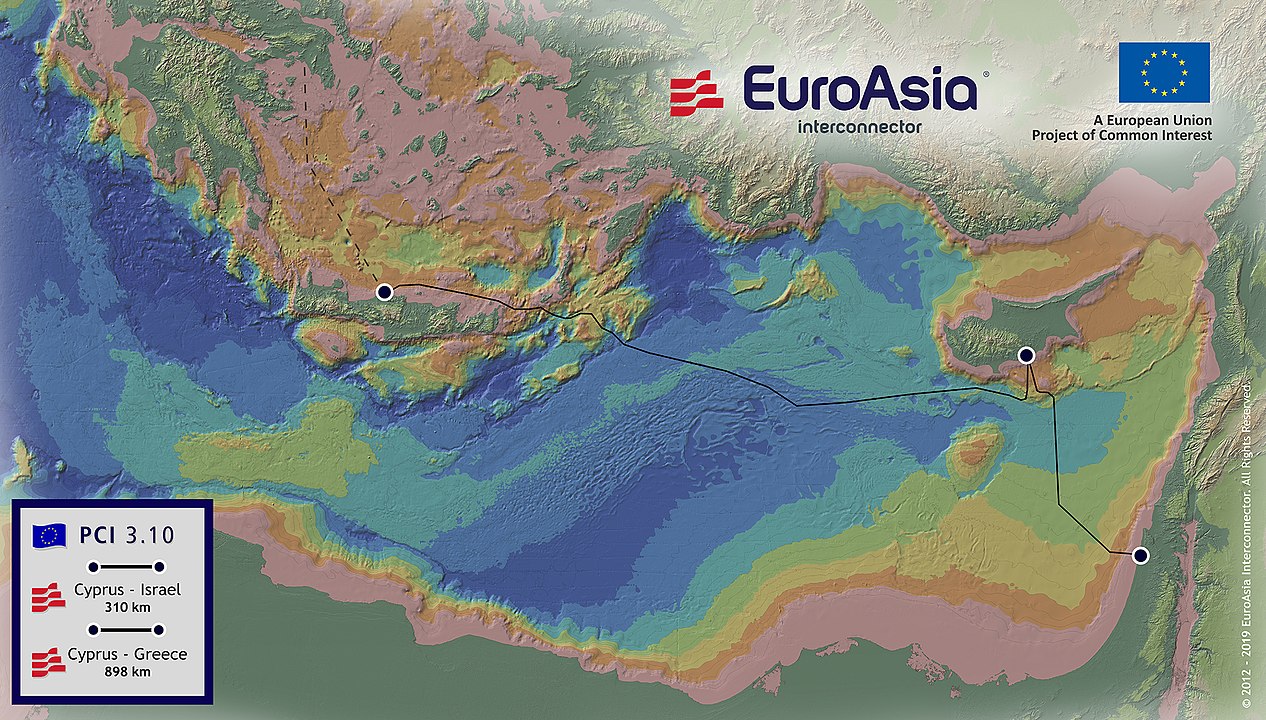
Map of the Great Sea Interconnector - By Sara Yard CC BY-SA 4.0
A new project, with the contribution of European cohesion funds, will integrate Crete's electricity system with mainland Greece. The project represents the first phase of the "Great Sea Interconnector", a larger Mediterranean grid connection
Despite its efforts to advance its renewable energy resources, Crete, the largest Greek island, has been struggling with its green transition given the lack of stable energy connections and aging equipment. With a population of around 630,000, Crete currently lacks national electricity connections and continues to rely on heavy oil or diesel to generate electricity, which causes about 60% of CO2 emissions.
To address these concerns, in February 2024, the European Regional Development Fund (ERDF), according to the European Commission, pledged 250 million Euros to finance “the first stage of high-voltage electricity infrastructure between the island of Crete and the Attica region, located in mainland Greece.” Using cohesion funds, the ERDF will help finance the project through the “Transport Infrastructure, Environment and Sustainable Development” Operational Programme, which falls under the priority to achieve low carbon emissions in urban areas.
This project will further integrate the electrical system of Crete with mainland Greece, with the goal of lowering costs, increasing supply security and generating economic development, especially in tourism. Additionally, the European Commission explains the project will support Europe’s green transition by supporting Crete’s renewable energy potential, with the interconnector predicted “to reduce CO2 emissions by more than 400 000 tonnes” during its first year of operation.
Given the rise in energy prices and European reliance on Russian gas supplies, the connection between Crete and the mainland will further strengthen energy security on the continent. However, this energy connection is just the first stage in an ambitious, partially EU-financed project, called the ‘Great Sea Interconnector’ which will connect Greece (through Crete) to Cyprus, and then Cyprus to Israel. As Euractiv reports , “[t]he €1.9 billion Great Sea Interconnector will be able to carry up to 2,000 megawatts and has garnered interest from funds in Israel, the United Arab Emirates and the Development Finance Corporation, a US government finance institution”.
Similar to Crete, Cyprus faces high energy and electricity prices, and Euractiv writes , would benefit greatly from a Mediterranean grid connection, which plans to connect the power grids of Israel and Europe.
Speaking during The Economist's 5th Eastern Mediterranean Business Summit, in New York in April 2024, the Cypriot Minister of Energy, Trade and Industry, Giorgos Papanastasiou stressed the importance of the Great Sea Interconnector, mentioning that the link between Attica and Crete will serve as the ‘operational cable’ of the greater project.
While there are still political and business details to be sorted out before the infrastructure can be realized, the interconnection between Attica and Crete should be completed and operational by 2025.
This content is published in the context of the "Energy4Future" project co-financed by the European Union (EU). The EU is in no way responsible for the information or views expressed within the framework of the project. The responsibility for the contents lies solely with OBC Transeuropa. Go to the "Energy4Future"


































 To Top
To Top